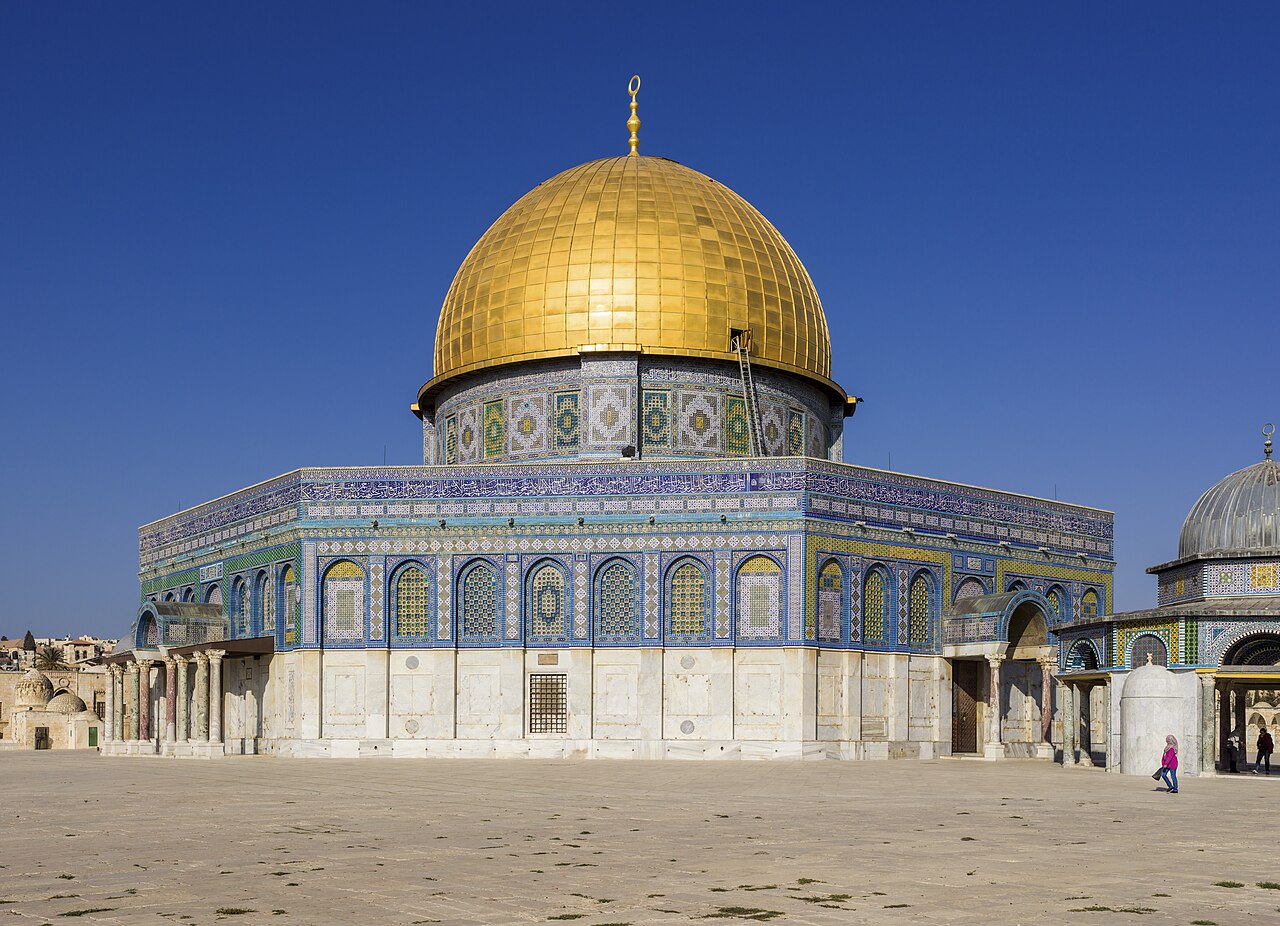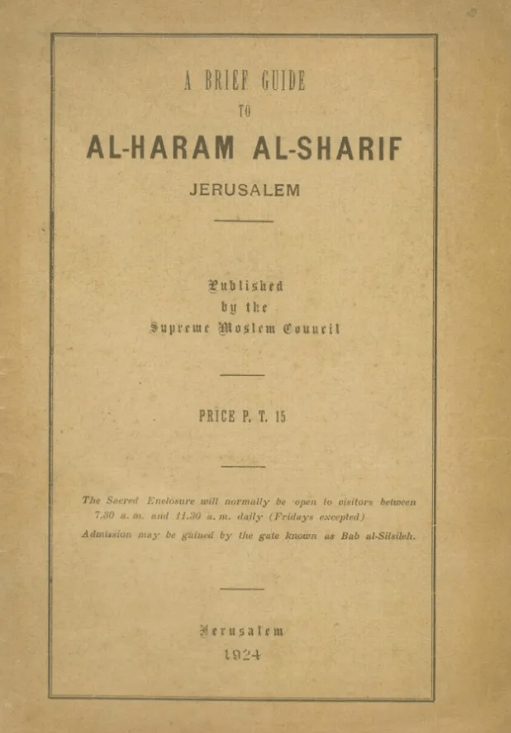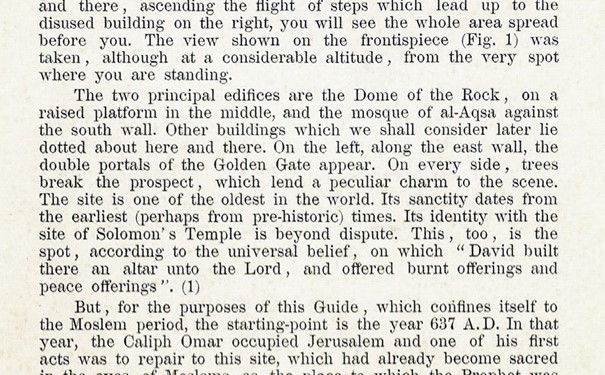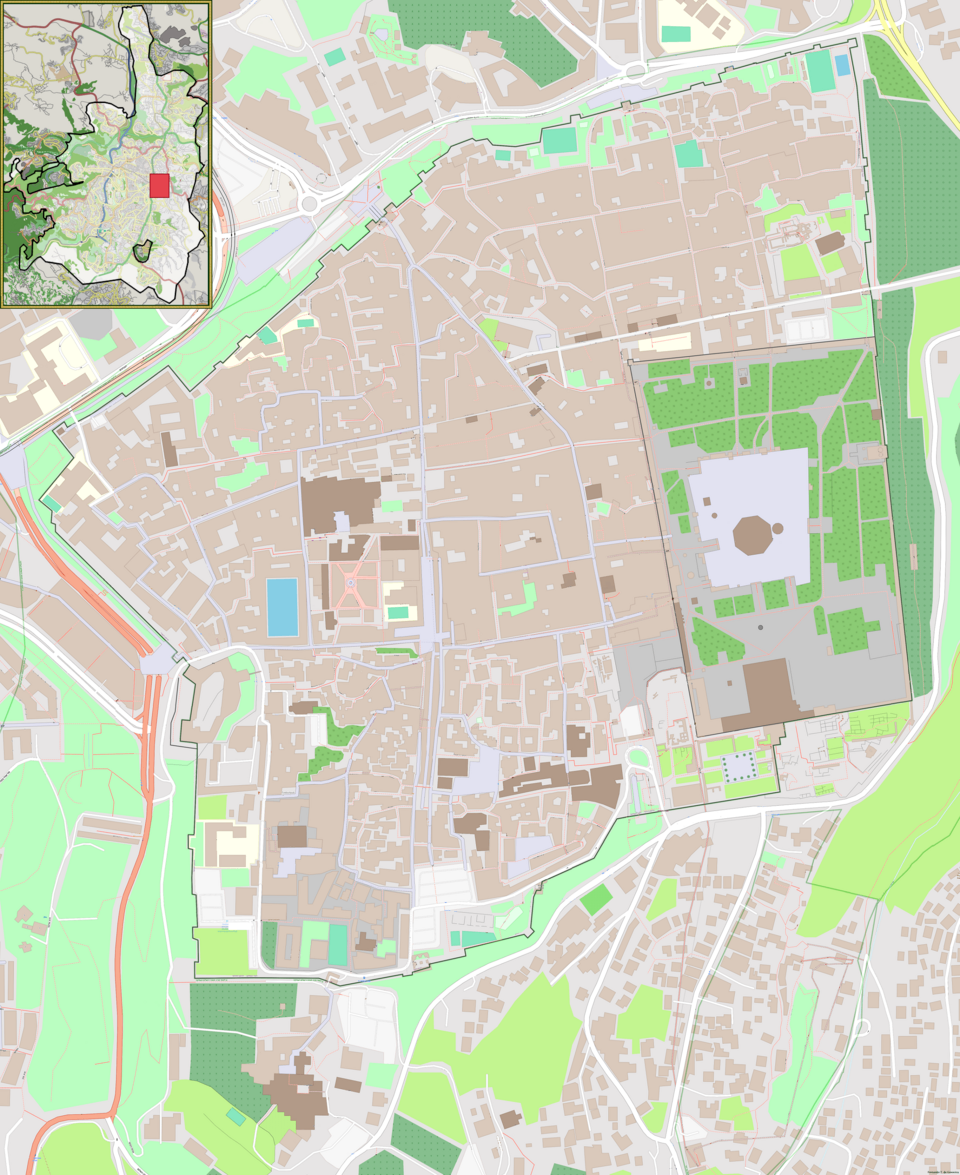
History of the Dome Of The Rock, al Haram Al Sharif
The Dome of the Rock stands as an architectural and spiritual landmark, built over the very rock that was once the heart of the Jewish Temple. Its history reflects the intersection of faiths in Jerusalem, making it one of the most contested and revered places in the world.
The Dome of the Rock is one of the most significant religious monuments in the world, located on the Temple Mount in Jerusalem. It is an Islamic shrine built over a rock that holds deep religious importance for Jews.

The Sacred Rock and the Jewish Temple
The site of the Dome of the Rock is directly linked to Jewish history as the location of the First and Second Jewish Temples. According to Jewish tradition:
- The First Temple, built by King Solomon in the 10th century BCE, stood on this very site and housed the Ark of the Covenant in the Holy of Holies. This was the spiritual center of Jewish worship.
- After the destruction of the First Temple by the Babylonians in 586 BCE, the Second Temple was rebuilt in 516 BCE and later expanded under King Herod in the 1st century BCE.
- The Second Temple was destroyed by the Romans in 70 CE, during the Jewish revolt.
Jewish tradition also identifies the rock under the Dome as the Foundation Stone (Even HaShetiyah), believed to be where Abraham prepared to sacrifice Isaac and where the Holy of Holies once stood.

Foundation Stone/ Even Hashetiyah
The Foundation Stone is a holy stone in the Dome of the Rock on the Temple Mount in Jerusalem. The Foundation Stone, also called Even haShetiya in Hebrew, or simply Rock, is believed by Talmudic sages and many modern Jews to be the place from which the rest of the world was created — the first bit of the world to come into being. Writings dating back to the Roman period attest to the significance of the Foundation Stone.
The spiritual significance of the stone extends far beyond it being regarded as the place from whence the world was created. According to the Talmud, this was also the location where God gathered dust that was made into Adam, and that Adam, Cain, Abel, and Noah offered sacrifices to God. Modern Jews identify the rock with references with Mount Moriah in the Bible, as the Temple Mount was thought to have been built over this natural hill, the tallest in the Old City of Jerusalem. Jewish sources also consider the rock to be where Abraham almost sacrificed his son Isaac.
Sometime around 1000 BCE, the area is thought to have been a threshing floor owned by Araunah the Jebusite. A threshing floor is where wheat is tossed into the windy area to separate the grain from the chaff. It helps to have it on top of a high hill, where there is ample wind. Conversely, this may be simply a story with metaphoric spiritual significance. According to the Torah, King David, the second king of the United Kingdom of Israel, purchased the threshold floor and built an altar around the Foundation Stone.
After David died, his son and successor, Solomon, built an elaborate temple there, today referred to as the First Temple. This Temple was the center of ancient Judaism until it was destroyed in an attack by the Babylonians in 587 BCE. Another Temple was constructed over the Foundation Stone, which was subsequently destroyed by the Romans in 70 CE. Several hundred years later, in 691, the Islamic rulers of Jerusalem built the Dome of the Rock on the site, which is the oldest extant Islamic structure in Islam. Beneath the Foundation Stone is a cavern known as the Well of Souls. The Well of Souls is sometimes thought of as the traditional hiding place of the Ark of the Covenant.

Islamic Construction of the Dome
After the Muslim conquest of Jerusalem in 638 CE, the early Muslim rulers sought to commemorate the site. In 691-692 CE, the Umayyad Caliph Abd al-Malik ordered the construction of the Dome of the Rock, making it the first great Islamic architectural monument. While it was not built as a mosque, it served as a shrine to emphasize Islam’s connection to Jerusalem and to assert the presence of Islam on the former Temple Mount.
Control and Religious Significance Over Time
Over the centuries, control of the Dome of the Rock shifted between different rulers:
- Christian Crusaders took control of the site in 1099 and converted it into a church.
- Muslim forces under Saladin recaptured Jerusalem in 1187, restoring the shrine as an Islamic holy site.
- Under Ottoman rule (1517–1917), the Dome underwent extensive renovations.
- In the modern era, the site remains under Islamic Waqf administration, though it continues to be a focal point of religious and political tensions.

The Dome of the Rock Today
The Dome of the Rock remains a powerful symbol of faith and history, standing on the holiest site in Judaism, which Jews revere as the location of the Holy Temple. The shrine also holds deep significance in Islam, as one of its most sacred sites after Mecca and Medina.
The structure itself is a masterpiece of Islamic architecture, featuring a golden dome, intricate mosaics, and Quranic inscriptions affirming Islamic beliefs.



